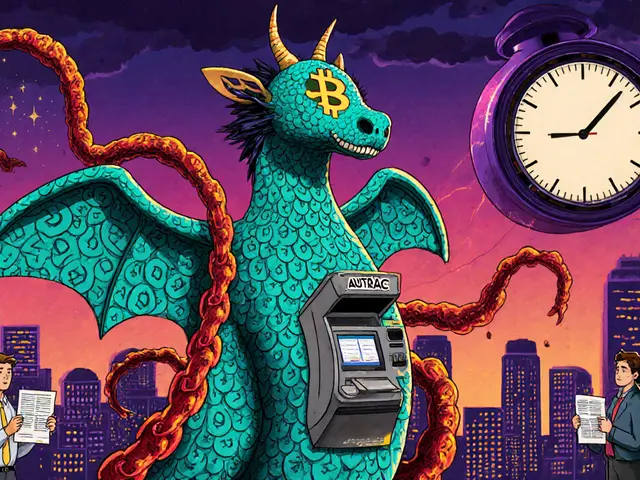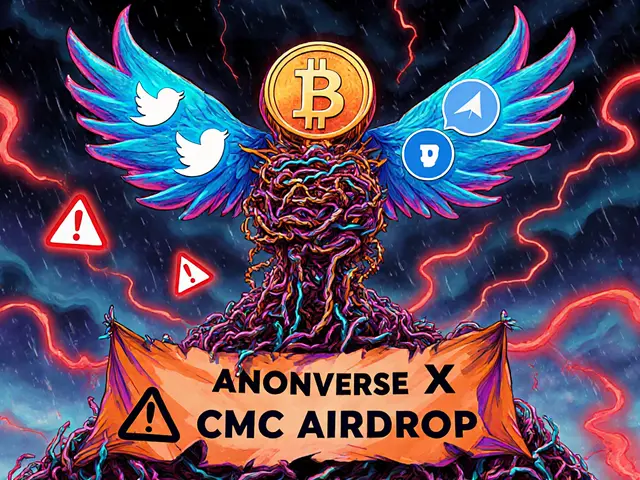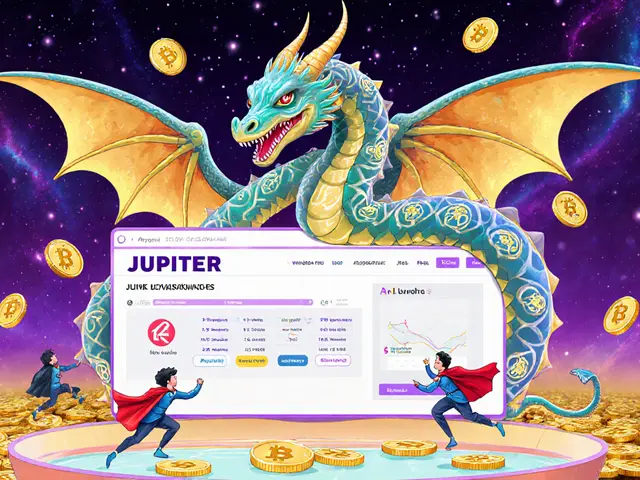Rollup Transaction Cost Calculator
Transaction Type
Your Savings
Blockchains like Ethereum were never built to handle millions of users sending transactions every second. Back in 2021, when NFTs and DeFi exploded, the network slowed to a crawl. Gas fees spiked to over $100 for a simple swap. People were frustrated. Developers couldn’t build fast apps. And the core problem? Every single transaction had to be processed and stored on the main blockchain - the Layer 1.
That’s where rollups come in. They’re not a new blockchain. They’re not a fork. They’re a smarter way to pack more transactions into the same space - without breaking the security of the main chain. Think of them like a bus. Instead of 1,000 people driving their own cars to the city (each one costing fuel and clogging roads), you put them all on one bus. The bus still has to pay the toll (gas fee on Ethereum), but now 1,000 people share it. That’s the core idea.
How Rollups Work: Off-Chain Processing, On-Chain Security
Rollups take hundreds or even thousands of transactions and bundle them into one single data packet. This bundle is then sent to Ethereum (or another Layer 1 chain) as one transaction. The actual processing - checking who sent what, updating balances, running smart contracts - happens off-chain. That’s the "rollup" part: rolling up many transactions into one.
But here’s the magic: even though the work happens off-chain, the final data is still stored on Ethereum. That means if someone tries to cheat - say, pretending they sent 10 ETH when they didn’t - the main chain can catch it. Rollups don’t sacrifice security for speed. They inherit Ethereum’s security because the data is anchored there.
It’s like sending a signed receipt to the bank. The bank doesn’t need to watch every coffee purchase you make. But if you claim you paid $1,000 for a latte, the bank can check your signature and say, "Nope, that’s not right." Rollups work the same way.
Two Types of Rollups: ZK vs Optimistic
Not all rollups are built the same. There are two main types, and they solve the same problem in completely different ways.
ZK-Rollups: Proof-Based Trust
ZK-rollups use something called zero-knowledge proofs. This is a fancy term for a mathematical trick that proves something is true without revealing the details. Imagine you want to prove you’re over 21 without showing your ID. A ZK-proof lets you do that.
In a ZK-rollup, every batch of transactions comes with a tiny cryptographic proof. Ethereum checks that proof in seconds. If it’s valid, the batch is accepted. No waiting. No disputes. No fraud possible - because the math guarantees it.
The downside? These proofs are complex to generate. They need powerful computers. That makes ZK-rollups harder to build and more expensive to run. But they’re faster to finalize. Transactions are confirmed in minutes, sometimes seconds.
Examples: zkSync, StarkNet, Polygon zkEVM.
Optimistic Rollups: Assume Good Faith, Check for Cheaters
Optimistic rollups take the opposite approach. They assume every transaction is honest - until proven otherwise. They process batches quickly, post the results to Ethereum, and wait for a challenge window - usually 7 days.
If someone spots fraud - say, someone claims to have transferred $1 million but only had $100 - they can submit a "fraud proof" to Ethereum. The chain then re-runs the transaction and penalizes the cheater. The honest user gets their money back. The fraudster loses their deposit.
This system works because cheating is expensive. You have to lock up a lot of money as collateral to post a batch. If you cheat, you lose it all. So most people don’t try.
The trade-off? Finality takes longer. You wait up to a week for your transaction to be fully secure. But building optimistic rollups is easier. They’re more flexible and can run complex smart contracts - like full DeFi apps - without major changes.
Examples: Optimism, Arbitrum.

Why Rollups Are Changing Blockchain
Before rollups, scaling solutions were either unsafe (like sidechains) or too slow (like Layer 1 upgrades). Rollups cracked the code. They give you:
- Lower fees: Instead of paying $50 per transaction, you pay $0.10 or less.
- Faster speeds: Transactions settle in seconds, not minutes.
- Same security: No need to trust a new chain. You’re still protected by Ethereum.
- More space: Ethereum can handle 300,000-500,000 transactions per second with rollups - up from just 15-30 before.
That’s not a small improvement. That’s a revolution. It’s what lets apps like decentralized exchanges, gaming platforms, and social networks actually work for everyday people.
Who’s Using Rollups Right Now?
Rollups aren’t just theory. They’re live, running, and growing fast.
On Ethereum, over 70% of all activity now happens on rollups. Apps like Uniswap, Aave, and dYdX run on Arbitrum or Optimism. Even big companies are jumping in. Visa tested a payment system on a rollup. Sony built one for gaming NFTs. Flipkart, India’s biggest e-commerce site, uses a rollup for its crypto rewards program.
It’s not just Ethereum, either. Bitcoin is experimenting with rollups too. Projects like Stacks and Rootstock are bringing rollup-like scaling to Bitcoin’s network, letting it handle smart contracts without changing its core rules.

What’s Next for Rollups?
Rollups are still evolving. The next big step is Layer 3 networks - rollups built on top of other rollups. Imagine a gaming platform that runs its own ultra-fast rollup on top of Arbitrum. That’s Layer 3. It lets developers optimize for specific needs: low latency for real-time games, high privacy for finance, or tiny data footprints for mobile apps.
Another trend? Better ZK-proofs. New hardware and algorithms are making ZK-rollups faster and cheaper to create. Soon, they might outpace optimistic ones in adoption.
One thing’s clear: rollups are no longer a "nice to have." They’re the only way blockchains scale without losing their soul. Without them, crypto would still be stuck in 2021 - slow, expensive, and unusable for most people.
Final Thoughts: Rollups Are the Bridge to Mainstream Adoption
Blockchains were supposed to be fast, cheap, and open. For years, they weren’t. Rollups fixed that. They didn’t break the rules. They worked within them - smarter.
If you’re using DeFi, NFTs, or even a crypto wallet, there’s a good chance you’re already on a rollup. You just don’t know it. And that’s the point. The best technology is the one you don’t notice.
Rollups made blockchain usable. And that’s why they matter.











17 Comments
So basically we're just outsourcing work to a bus and calling it innovation? Cool. I'll believe it when I see gas fees under $0.01 consistently.
ZK rollups are the future but the math is still too heavy for mobile. We need lighter proofs. Anyone working on this?
this is actually kinda wild how they just tacked on scaling without breaking everything. like wow. thanks for explaining it so clear
Rollups are the reason I can actually use crypto now 😭 No more waiting 20 mins for a swap. This is the stuff dreams are made of
Optimistic rollups wait 7 days to confirm... so you're telling me my $1000 NFT purchase might get reversed if someone feels like it? Sounds like a bank with extra steps
The real question is... who's really controlling the sequencers? 😏 Are we just replacing one central point of failure with another? The blockchain is dead long live the blockchain 🤔
I've been using zkSync for months. Fees are 100x lower and the UI is clean. No drama. Just works. You should try it.
This is the biggest scam since pyramid schemes. They're not scaling blockchain - they're burying it under layers of abstraction. The soul is gone. The decentralization is a meme now. 🤡
If you think rollups are revolutionary, you've never seen a real tech breakthrough. This is just accounting trickery wrapped in blockchain buzzwords. Try again in 2030.
I love how this made crypto actually usable 😊 I used to quit every time gas hit $50. Now I just swap, laugh, and move on 💃✨
they say security is inherited but what if the data availability layer gets censored? what if the sequencer is bought by the feds? what if the zero knowledge proofs are backdoored? no one talks about this
Man I remember when I paid $80 to send a token. Now I do 20 a day for less than a dollar. This is the quiet revolution nobody's talking about but everyone's using.
You know what's wild? Rollups are basically like when you put all your laundry in one bag so you only do one load. But the washing machine is still super slow and you gotta wait for the spin cycle. So maybe it's not perfect. But it's better than washing each sock individually. Also I think the moon is made of cheese and rollups are proof.
The real innovation isn't the tech. It's that we finally accepted that perfection isn't required for progress. We stopped trying to build utopia and started building tools that work. That's the quiet philosophy behind rollups.
I must say, the architectural elegance of rollups is truly commendable. One is struck by the harmonious balance between scalability and cryptographic integrity. Truly, a triumph of modern computer science.
I used to be excited about crypto. Now I just feel like I'm watching a magic show where everyone knows the trick but no one will say it out loud. Rollups? More like roll-slow-downs.
ZK rollups are way more efficient than optimistic ones. The math is hard but the UX is smoother. If you're building anything serious, go ZK.